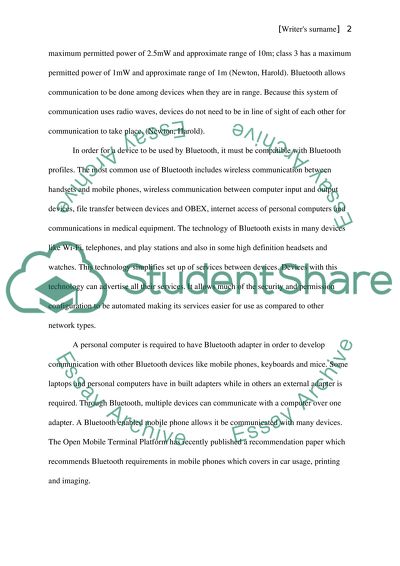Cite this document
(Comparing Bluetooth Technology with Infrared Assignment Example | Topics and Well Written Essays - 2250 words, n.d.)
Comparing Bluetooth Technology with Infrared Assignment Example | Topics and Well Written Essays - 2250 words. https://studentshare.org/technology/1512822-comparing-bluetooth-technology-with-infrared
Comparing Bluetooth Technology with Infrared Assignment Example | Topics and Well Written Essays - 2250 words. https://studentshare.org/technology/1512822-comparing-bluetooth-technology-with-infrared
(Comparing Bluetooth Technology With Infrared Assignment Example | Topics and Well Written Essays - 2250 Words)
Comparing Bluetooth Technology With Infrared Assignment Example | Topics and Well Written Essays - 2250 Words. https://studentshare.org/technology/1512822-comparing-bluetooth-technology-with-infrared.
Comparing Bluetooth Technology With Infrared Assignment Example | Topics and Well Written Essays - 2250 Words. https://studentshare.org/technology/1512822-comparing-bluetooth-technology-with-infrared.
“Comparing Bluetooth Technology With Infrared Assignment Example | Topics and Well Written Essays - 2250 Words”. https://studentshare.org/technology/1512822-comparing-bluetooth-technology-with-infrared.


